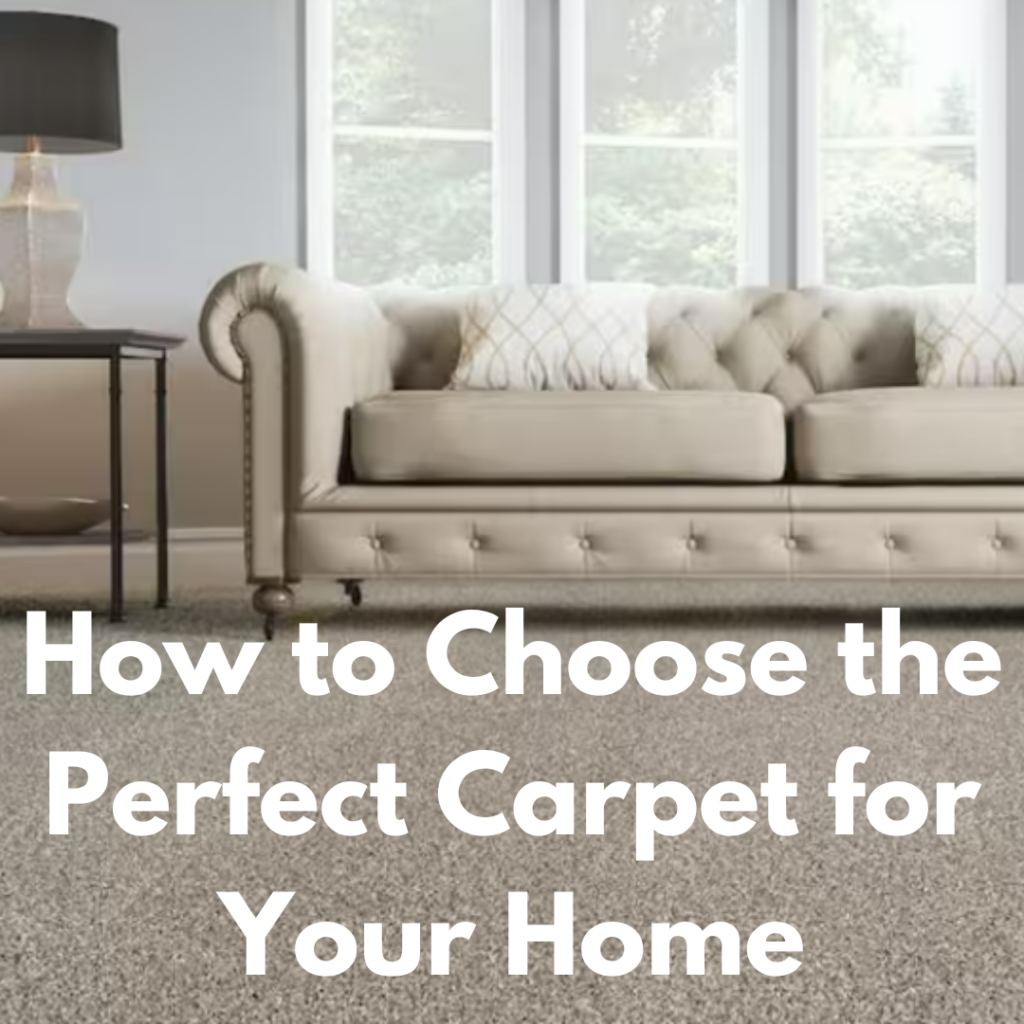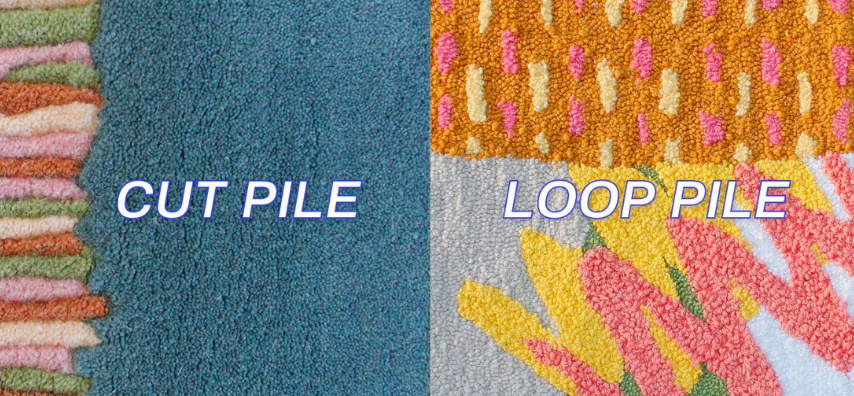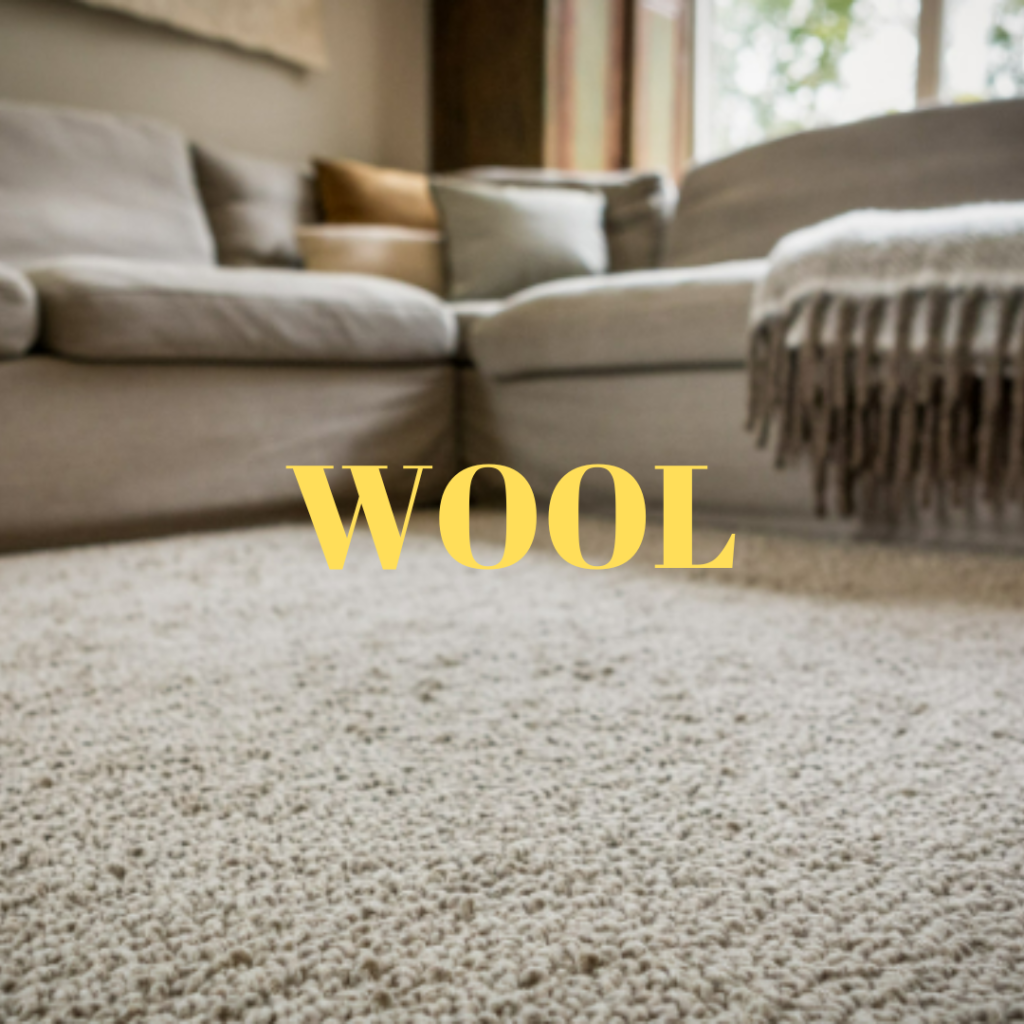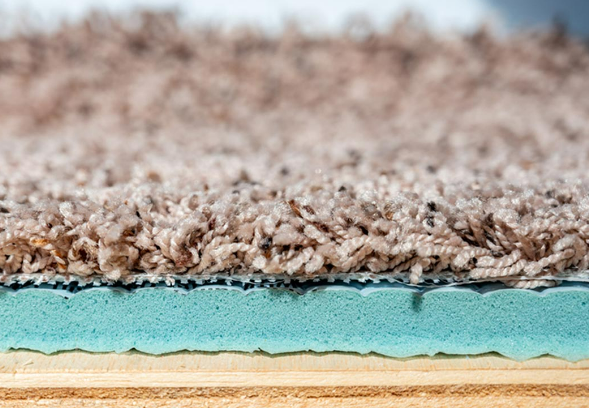
Choosing the right carpet for your home is not just about enhancing its aesthetic appeal; it’s also about ensuring functionality and comfort. Carpets play a crucial role in setting the tone of a room, whether it’s adding warmth to a cozy living space or providing a plush surface for bare feet in a bedroom. Beyond aesthetics, selecting the perfect carpet involves considering various factors to suit your lifestyle and practical needs.
Factors such as carpet type, fiber choice, and room usage all contribute to making an informed decision. Understanding these elements ensures that your carpet not only looks beautiful but also stands the test of time, maintaining its quality and comfort for years to come. In this article, we’ll delve into the essential considerations when choosing carpeting, helping you navigate the options and find the ideal carpet for your home.
Understanding Different Carpet Types
When selecting carpeting for your home, one of the fundamental choices you’ll encounter is between cut pile, loop pile, and combination carpets, each offering distinct features suited to different preferences and usage scenarios.
Cut Pile vs. Loop Pile:

Cut Pile: Cut pile carpets are perhaps the most common choice for residential settings. They are created by cutting the yarn loops, which results in individual yarn tufts standing upright. This type of carpeting offers a softer and more luxurious feel underfoot, making it ideal for areas where comfort is paramount, such as bedrooms and living rooms. Here are some pros and cons of cut pile carpets:
- Pros:
- Soft and plush texture.
- Wide range of styles and colors available.
- Good at hiding vacuum marks and footprints.
- Cons:
- May show wear and tear more quickly in high-traffic areas.
- Less durable than loop pile carpets.
Loop Pile: Loop pile carpets, as the name suggests, feature loops of yarn that are not cut, creating a dense and durable surface. This type of carpeting is known for its strength and resistance to crushing, making it suitable for areas with heavy foot traffic like hallways, stairs, and commercial spaces. Here are the pros and cons of loop pile carpets:
- Pros:
- Highly durable and resistant to matting.
- Ideal for high-traffic areas.
- Maintains its appearance over time.
- Cons:
- Less soft underfoot compared to cut pile carpets.
- Limited variety in terms of patterns and textures.
Cut and Loop Pile:
Combination or cut and loop pile carpets blend both cut and looped fibers to create patterns and textures that can be visually appealing and practical. This type of carpeting combines the benefits of both cut and loop pile constructions, offering versatility in design and durability. Here are the unique characteristics of cut and loop pile carpets:
- Unique Characteristics:
- Varied patterns and textures, including geometric designs and sculptured effects.
- Can effectively hide dirt and stains due to the patterned surface.
- Provides a balance between comfort and resilience, suitable for diverse room settings.
Understanding these different carpet types allows you to choose the best option based on your specific needs, whether you prioritize comfort, durability, or a blend of both. Each type offers distinct advantages that can enhance the look and feel of your living spaces while accommodating your lifestyle demands.
Carpet Fiber Options




Choosing the right carpet fiber is crucial as it directly impacts the carpet’s performance, durability, and maintenance requirements. Here’s a breakdown of the most common carpet fiber options available:
Nylon: Nylon is one of the most popular and durable carpet fibers on the market. It offers exceptional resilience, making it resistant to wear and tear from foot traffic and furniture. Nylon carpets are known for their ability to bounce back to their original shape, maintaining their appearance over time. Here are the key attributes of nylon carpets:
- Durability: Highly durable and resilient to crushing and matting.
- Versatility: Available in a wide range of styles, colors, and textures.
- Stain Resistance: Can be treated to enhance stain resistance, making it easier to clean and maintain.
Polyester: Polyester carpets are valued for their softness and luxurious feel underfoot. They are naturally stain-resistant due to their hydrophobic properties, making them a practical choice for homes with children and pets. Here are the advantages of polyester carpets:
- Softness: Offers a luxurious feel and comfortable texture.
- Stain Resistance: Naturally resistant to stains and fading.
- Affordability: Generally more affordable than nylon and wool carpets.
- Color Options: Retains vibrant colors well, providing long-lasting aesthetics.
Wool: Wool is a natural fiber prized for its luxurious feel, durability, and sustainability. It offers unmatched comfort and insulation properties, making it ideal for both warmth and noise reduction in homes. Here are the characteristics of wool carpets:
- Natural Luxury: Soft and luxurious feel underfoot.
- Durability: Resistant to crushing and maintains its appearance over time.
- Insulation: Provides excellent thermal and acoustic insulation.
- Sustainability: Renewable and biodegradable, making it an eco-friendly choice.
Olefin (Polypropylene): Olefin, also known as polypropylene, is valued for its affordability and moisture resistance. It is often used in outdoor and indoor-outdoor carpets due to its ability to resist moisture and mold growth. Here are the benefits of olefin carpets:
- Affordability: Cost-effective option for budget-conscious consumers.
- Moisture Resistance: Resistant to moisture, making it suitable for basements and outdoor spaces.
- Colorfastness: Retains colors well and resists fading from sunlight exposure.
- Easy Maintenance: Generally easy to clean and maintain.
Each carpet fiber option has its unique characteristics and advantages, catering to different preferences and practical considerations. By understanding these fiber choices, you can make an informed decision that aligns with your home’s needs and lifestyle.
Considerations Based on Room Usage
When choosing carpeting for different areas of your home, it’s important to consider the specific demands and usage patterns of each room. Here’s a guide to selecting the right carpet types and fibers based on different room functionalities:
High-Traffic Areas: High-traffic areas such as hallways, stairs, and family rooms require carpets that can withstand frequent use without showing signs of wear and tear. Here are the best carpet types and fibers for durability in high-traffic areas:
- Nylon: Known for its exceptional durability and resilience, nylon carpets are ideal for areas prone to heavy foot traffic. They can withstand the constant movement of people and furniture without matting or crushing.
- Polyester: While not as durable as nylon, polyester carpets can still be a good choice for moderate to high-traffic areas due to their stain resistance and affordability.
Bedrooms and Living Areas: In bedrooms and living areas, comfort and noise reduction are often top priorities. These spaces are where you want to relax and unwind, so choosing a carpet that enhances comfort and minimizes noise is essential. Here are considerations for these areas:
- Softness: Opt for carpets made from luxurious fibers like wool or polyester for a plush feel underfoot.
- Noise Reduction: Carpets with dense pile construction, such as cut pile or plush carpets, help absorb sound and reduce noise transmission, creating a quieter environment.
Basements and Moisture-Prone Areas: Basements and areas prone to moisture require carpets that can resist mold, mildew, and moisture damage. Here’s why moisture-resistant materials are crucial:
- Olefin (Polypropylene): Olefin carpets are inherently moisture-resistant and mold-resistant, making them suitable for basements and areas where moisture is a concern.
- Nylon with Moisture Barrier Backing: Some nylon carpets come with a moisture barrier backing that helps prevent moisture from seeping through to the subfloor, enhancing durability and preventing mold growth.
Choosing the right carpet based on room usage ensures that your flooring not only enhances the aesthetic appeal of your home but also meets the practical demands of each space. By selecting carpets that are tailored to the specific needs of high-traffic areas, bedrooms, living areas, and moisture-prone areas, you can enjoy long-lasting comfort and functionality throughout your home.
Choosing Carpet Colors and Patterns
The color and pattern of your carpet can significantly impact the overall look and feel of a room. Here’s a guide to understanding how different colors and patterns can influence room perception and design:
Neutral vs. Bold Colors:
Neutral Colors: Neutral-colored carpets, such as beige, gray, and taupe, are timeless choices that offer versatility and flexibility in room design. Here are the effects of neutral-colored carpets:
- Room Perception: Neutral colors create a sense of spaciousness and airiness, making rooms appear larger and more open.
- Design Flexibility: They serve as a neutral backdrop, allowing you to easily change décor and furniture without clashing with the carpet.
Bold Colors: Bold-colored carpets, such as deep blues, rich reds, or vibrant greens, add personality and drama to a room. Here’s how bold colors influence room perception and design:
- Room Perception: Bold colors can make a room feel cozier and more intimate, especially in larger spaces where warmth is desired.
- Design Impact: They serve as a focal point in the room, adding character and personality. However, they may require more consideration when coordinating with existing décor and furnishings.
Patterned Carpets:
Adding Visual Interest: Patterned carpets offer a wide range of designs, from subtle textures to intricate motifs, that can enhance the visual appeal of a room. Here are the benefits of choosing patterned carpets:
- Visual Interest: Patterns add depth and dimension to a room, making it more visually appealing.
- Hiding Stains and Wear: Certain patterns, such as flecks or small motifs, can effectively camouflage stains and signs of wear, extending the carpet’s longevity.
- Design Flexibility: They can complement existing décor or serve as a statement piece, depending on the scale and style of the pattern chosen.
When selecting carpet colors and patterns, consider the overall aesthetic you want to achieve in each room. Whether you opt for neutral hues for their timeless appeal, bold colors for their impact, or patterned designs for added visual interest, your choice should align with your personal style and complement the room’s function and existing décor.
Understanding Carpet Padding

Carpet padding, often overlooked but crucial to the performance and longevity of your carpet, plays a significant role in both comfort and durability. Here’s why quality padding is essential and an overview of the types of padding materials available:
Importance of Quality Padding:
- Longevity: Quality padding acts as a buffer between the carpet and the subfloor, absorbing impact and reducing wear and tear on the carpet fibers. This extends the lifespan of your carpet, preventing premature flattening and matting.
- Comfort: A good carpet pad enhances the comfort of your flooring by providing a soft and resilient cushion underfoot. It adds a layer of insulation, making your home warmer in winter and cooler in summer.
- Sound Insulation: Padding helps absorb sound, reducing noise transmission between floors and rooms. This is especially beneficial in multi-story homes or areas where noise reduction is desired.
- Protection: By reducing friction between the carpet and the subfloor, padding prevents excessive stretching and movement, which can lead to wrinkles and ripples in the carpet over time.
Types of Padding Materials and Their Benefits:
- Foam Padding:
- Benefits: Offers a soft and comfortable feel underfoot. It comes in various densities, providing options for different levels of cushioning and support.
- Suitable For: Areas where comfort is a priority, such as bedrooms and living rooms.
- Fiber Padding (Felt Padding):
- Benefits: Made from recycled fibers or natural materials, fiber padding is environmentally friendly and offers good resilience and durability.
- Suitable For: High-traffic areas and rooms where durability and sound absorption are important.
- Rubber Padding (Rebond Padding):
- Benefits: Made from recycled rubber materials, rebond padding is highly durable and provides excellent support and cushioning.
- Suitable For: Areas with heavy foot traffic, such as hallways and stairs, as well as rooms where noise reduction is desired.
- Waffle Rubber Padding:
- Benefits: Features a waffle-like texture that enhances airflow and moisture resistance, preventing mold and mildew growth.
- Suitable For: Basements and moisture-prone areas where moisture resistance is crucial.
Choosing the right carpet padding involves considering factors such as the carpet type, room usage, and desired comfort level. Investing in quality padding not only enhances the comfort and performance of your carpet but also ensures its longevity and maintains the integrity of your flooring over time.
Budget Considerations
When selecting carpeting for your home, budget considerations play a crucial role in determining the type, fiber, padding, and overall cost. Here’s a breakdown of factors that influence carpet cost and tips for finding a balance between budget and quality:
Factors Influencing Carpet Cost:
- Type of Carpet:
- Cut Pile vs. Loop Pile: Loop pile carpets tend to be more affordable than cut pile due to their simpler construction.
- Cut and Loop Pile: Combination carpets may vary in cost depending on the complexity of the pattern and materials used.
- Carpet Fiber:
- Nylon: Generally more expensive than polyester or olefin due to its durability and resilience.
- Polyester: More affordable than nylon and offers good stain resistance.
- Wool: Among the most expensive options due to its natural luxury and durability.
- Padding Quality:
- Foam vs. Rubber vs. Fiber: Rubber and foam padding are typically more durable and comfortable but may cost more than fiber padding.
- Thickness: Thicker padding often costs more but provides better cushioning and insulation.
- Installation Costs:
- Labor Costs: Professional installation ensures proper fitting and longevity but adds to the overall cost.
- Room Size and Complexity: Larger rooms or areas requiring custom cuts may incur higher installation fees.
Tips for Finding a Balance Between Budget and Quality:
- Set a Budget: Determine your budget range based on the size of the area to be carpeted and your financial constraints.
- Prioritize Needs: Identify the most important factors for your carpeting, such as durability, comfort, or stain resistance.
- Compare Options: Shop around and compare different carpet types, fibers, and padding materials. Look for promotions or discounts offered by retailers.
- Consider Long-Term Costs: While initial costs are important, consider the long-term savings of investing in higher-quality carpeting that requires less frequent replacement and maintenance.
- Negotiate Installation Costs: Get multiple quotes from carpet installers and negotiate pricing to find competitive rates without compromising on quality.
- Look for Sales or Clearance Items: Many retailers offer sales or clearance discounts on carpeting, which can help you find high-quality options within your budget.
By understanding the factors that influence carpet cost and applying these tips, you can make an informed decision that meets your budgetary constraints while ensuring you get the best quality carpeting for your home. Balancing budget considerations with the desired features and longevity of your carpet will help you create a comfortable and aesthetically pleasing living environment.
Environmental Considerations
In today’s environmentally conscious world, choosing sustainable carpet options can reduce your carbon footprint and promote eco-friendly practices. Here’s a guide to understanding sustainable carpet choices and certifications to look for:
Sustainable Carpet Options:
- Recycled Materials:
- Recycled Nylon: Carpets made from recycled nylon fibers reduce waste and promote recycling efforts. They offer durability and performance similar to virgin nylon.
- Recycled PET (Polyethylene Terephthalate): PET carpets are made from recycled plastic bottles, providing a sustainable alternative to traditional carpet fibers.
- Eco-Friendly Fibers:
- Wool: Wool carpets are a natural and renewable fiber sourced from sheep. They are biodegradable and have excellent durability and insulation properties.
- Plant-Based Fibers (e.g., Seagrass, Sisal): Carpets made from plant-based fibers are sustainable options that are biodegradable and often grown without pesticides or synthetic fertilizers.
- Certifications to Look For:
- Green Label Plus: This certification from the Carpet and Rug Institute (CRI) ensures that carpets meet stringent indoor air quality standards for low emissions of volatile organic compounds (VOCs). Look for carpets with the Green Label Plus certification to ensure healthier indoor air quality.
- Cradle to Cradle (C2C) Certified: Carpets with the C2C certification are assessed based on their environmental impact across their entire lifecycle—from material selection and manufacturing to recyclability and social responsibility. This certification ensures that the carpet is designed with sustainability in mind.
- Global Organic Textile Standard (GOTS): If considering wool carpets, look for the GOTS certification, which ensures that the wool is sourced from organic farms that follow strict environmental and social criteria.
Choosing sustainable carpet options not only reduces environmental impact but also promotes healthier indoor air quality and supports responsible manufacturing practices. By opting for carpets made from recycled materials or eco-friendly fibers and looking for reputable certifications like Green Label Plus and Cradle to Cradle, you can make a positive impact on the environment while enjoying durable and stylish flooring in your home.
Maintenance and Care
Proper maintenance and care are essential for prolonging the life and maintaining the appearance of your carpet. Here’s a comprehensive guide to maintaining and caring for your carpet:
Regular Vacuuming:
Regular vacuuming is the most important step in carpet maintenance. It helps remove dirt, dust, and debris that can accumulate in the carpet fibers and cause premature wear. Follow these tips for effective vacuuming:
- Frequency: Vacuum high-traffic areas daily and less frequently used areas at least once a week.
- Vacuum Cleaner: Use a vacuum cleaner with adjustable height settings and a beater bar/brush to effectively lift dirt from the carpet pile.
- Direction: Vacuum in different directions to ensure thorough cleaning and prevent matting.
Professional Cleaning Recommendations:
While regular vacuuming is crucial, professional cleaning is necessary to remove deep-seated dirt and stains and to maintain the carpet’s condition. Follow these recommendations:
- Frequency: Schedule professional cleaning every 12-18 months, depending on the carpet type, usage, and household conditions.
- Method: Choose between steam cleaning (hot water extraction) or dry cleaning methods based on the carpet manufacturer’s recommendations and your carpet’s specific needs.
Stain Prevention Tips:
Preventing stains before they occur helps maintain the cleanliness and appearance of your carpet. Follow these tips to minimize staining:
- Immediate Action: Blot spills immediately with a clean, dry cloth or paper towel to absorb as much liquid as possible.
- Avoid Rubbing: Do not rub the stain, as it can spread and penetrate deeper into the carpet fibers.
- Use Mild Cleaner: Use a mild detergent solution or carpet cleaner recommended by the manufacturer for spot cleaning.
- Test First: Always test any cleaning solution on a small, inconspicuous area of the carpet to ensure it does not damage or discolor the fibers.
Spot Treatment Advice:
When accidents happen, quick and proper spot treatment can prevent stains from setting into the carpet. Follow these steps for effective spot treatment:
- Blotting: Blot the stain with a clean, dry cloth or paper towel to absorb excess liquid.
- Apply Cleaner: Apply a small amount of cleaning solution to the stain and blot gently from the outside toward the center.
- Rinse: Rinse the area with clean water and blot dry with a clean cloth.
- Dry: Allow the carpet to air dry completely before walking on it or replacing furniture.
By following these maintenance and care guidelines, you can extend the life of your carpet, keep it looking its best, and ensure a clean and healthy environment in your home for years to come.
Choosing the right carpet for your home involves considering a variety of factors, from carpet type and fiber to room usage and budget. Here’s a recap of key points to guide you in making an informed decision:
- Understanding Carpet Types: Whether you opt for cut pile, loop pile, or a combination, each type offers unique benefits in terms of durability and comfort.
- Selecting the Right Fiber: Nylon for durability, polyester for softness and stain resistance, wool for natural luxury, and olefin for affordability and moisture resistance.
- Considering Room Usage: High-traffic areas benefit from durable carpets, while bedrooms and living areas focus on comfort and noise reduction.
- Choosing Colors and Patterns: Neutral colors create a timeless backdrop, while bold colors and patterns add personality and hide stains.
- Importance of Quality Padding: Quality padding enhances comfort, extends carpet life, and provides sound insulation.
- Environmental Considerations: Opt for sustainable options like recycled materials and eco-friendly fibers certified by standards like Green Label Plus.
- Maintenance and Care: Regular vacuuming, professional cleaning, and prompt stain treatment are essential for preserving carpet appearance and longevity.
Emphasis on Quality Carpeting:
Investing in quality carpeting not only enhances the comfort and aesthetics of your home but also contributes to its overall value. A well-chosen carpet complements your interior décor, provides insulation, and creates a welcoming atmosphere for family and guests.
Call Ben for Your Carpet Needs
Ready to enhance your home with the perfect carpet? Contact Ben Painting & Improvements today for expert advice and professional carpet installation services tailored to your needs. Call Ben at 407-467-7036 to schedule a consultation and transform your living space with quality carpeting that lasts.
Choosing the right carpet is more than just a flooring decision—it’s an investment in your home’s comfort and style. Trust Ben Painting & Improvements to guide you through the selection process and deliver exceptional results that exceed your expectations.
